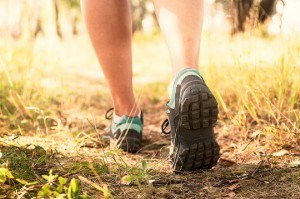
Resuming Sports and Fitness after Stoma Surgery
As your stoma begins to heal following surgery, you may wonder about a more active lifestyle – either to resume the sports and fitness activities you have already enjoyed, or whether you’ll be able to take up a new sport that you want to try.
The thought of taking up a new sport or striving for ambitious goals in a sport previously enjoyed, can seem overwhelming. But many have done just that. In fact, they believe they are fitter and healthier than before the operation.
For many people, stoma surgery creates a renewed zest for life. Along with that new found enthusiasm comes the desire and determination to achieve goals they would never before have considered.
Stoma surgery is a major event that should not be underestimated. The first few weeks or even months following the operation may be difficult as you adjust gradually to having a stoma. However, once fully recovered and settled at home, returning to the lifestyle you enjoyed before the operation should be no problem.
“Having to cope with the operation and the change in lifestyle that goes with it, brings out a strength in people that otherwise would lie dormant. As a result, no goal seems too difficult to achieve once you’ve set your mind to it. I strongly recommend everyone to take some kind of exercise, even if it is only walking a little each day. Once you give in and become inactive, you lose so much out of life. Being active, especially in sports, can only add to the quality of life.” Betty Sands, active swimmer and ostomate
This blog post will cover commencing gentle exercises and then at three sporting areas: swimming, contact and team sports and “creating new challenges.” You will find practical advice from others who have had first-hand experience in returning to an active lifestyle. They understand the fears and practical concerns you may be facing.
As long as you have no complications and your doctor has no objection, you can enjoy almost any kind of sporting activity. Contact sports, such as rugby, karate or kung fu, are possible. Even sports that call for a lot of bending, such as bowling, lawn bowls and aerobics, have been taken up after getting a stoma.
This blog post will help answer your questions and encourage you to get the many pleasures and benefits that come from physical activity.
Whatever your type of stoma or current level of fitness, we hope you will find your own path to a healthier body.
Your Body’s Response and Capabilities
Before looking at specific sports and fitness activities, it is important to have a clear understanding of how your body has responded to your surgery.
The Stoma is Stronger than you think
The stoma that protrudes from your abdomen may look vulnerable. But it is, in fact, quite hardy. The surgical incision should be fully closed just about ten days after the operation, and, over time, the scar tissue surrounding the stoma will reach its optimum strength.
It is not that easy to injure the stoma. As an example of its resilience, a horse once accidentally kicked a person directly on the stoma. There was good deal of bruising, but the stoma itself remained undamaged and continued to work normally. Of course we are not recommending that you try this test or anything similar. Caution is key – everyone’s body has its own unique abilities and responses.
Hernia prevention and care
Everyone, even those without a stoma, should take care to protect his or her abdomen. Now that you have a stoma, you will want to be especially careful. With a stoma, the risk of hernia from lifting or strenuous exercise may be higher than that of developing a common groin hernia. This is because the muscles supporting the stoma are not as strong as they were before surgery.
You can help prevent the development of a stoma hernia by taking precautions.
- Exercise – This includes gentle abdominal exercises such as sit-ups and walking.
- Manage your weight. Stay within your appropriate weight range.
To help with an existing parastomal hernia, you can try specially designed support garments to care for your hernia.
Contact your local stoma support group or your stoma care nurse for further information.
Perineal wound healing
In some cases, a person may have a perineal (rectal) wound resulting from the removal of the anus and rectum. Although this area is likely to be tender for longer than a stoma wound, it will heal and become equally resilient.
Staying hydrated
If you have a stoma, particularly an ileostomy, there are occasions where you may become dehydrated. Care should be taken to drink plenty of water, unless you have a fluid restriction.
There are several situations that make you especially susceptible to dehydration. In hot climates and/or when exercising, less urine is produced, so it is more concentrated. And when diarrhea strikes, more fluid is being lost, so more should be taken in.
To help rehydrate your body, water is the best fluid, as it is the most readily available. You can also get special rehydrating solutions from most pharmacies, and sports drinks can be useful for severe cases of diarrhea.
One good sign of being well hydrated is passing clear or straw-colored urine throughout the day.
Diet for fitness
Once you recover from surgery, your diet and state of nutrition should be getting back to normal. How and what we eat is as much part of our individuality and lifestyle as our appearance and personality, and having a stoma should not restrict individual preferences.
Try whatever you like, but be cautious at first and chew thoroughly to avoid possible digestive problems. You may find that some foods upset your system, causing gas, diarrhea or even pain. Pay attention to your body to learn how your digestive system works best – when food is required, how long it takes to digest and what foods upset your system, if any.
Keep an eye on your weight. A nourishing diet includes fruit and vegetables, meat, fish, dairy products and cereal and will help keep you healthy. Additional vitamin supplements also may help to ensure you are getting the best nutrition.
Fitness results from the best possible balance between diet and exercise.
All foods contain energy in the form of calories. The number of calories we need in a day depends on two factors that will be different for everyone – the level of physical activity and metabolic rate. Both of these factors affect the amount of calories you should take in. However, everyone has a different metabolic rate, so some people will gain or lose weight when consuming the same amount of calories. Early in your healing stages, you may require more calories in the form of proteins for good cell and muscle repair and then return to your normal routine. An experienced dietician may offer helpful advice as well.
Beginning To Exercise Again
As you recover from surgery, you will probably feel tired and may have little wish for exercise.
But you know it is important for your overall health and well-being to start moving around, even just a little at a time. Exercise can help you get better faster and also prevent potential complications from sitting or lying too long. This does not mean aggressive or strenuous exercises by any means. Take it easy, start out slowly and enjoy the thought that you are getting back to your normal lifestyle.
Walking
The easiest and most effective form of exercise can be walking. It gets the blood flowing, helps with mental alertness, helps lift your spirits and generally increases your physical well-being.
Walking can be started soon after surgery and gradually increased to quite a brisk pace, adding minutes and distance over time.
You can even walk in the house. Special videos and DVDs, or even just some invigorating music, will help set the pace. Some people practice going up and down stairs to increase stamina and endurance. But if weather permits, a brisk walk outside in the fresh air can do wonders both physically and mentally.
Biking
Riding a bike is also an excellent form of exercise that does not put too much strain on your abdomen or involve heavy impact. Like walking, biking can be introduced gradually and then increased over time to higher levels.
If you have a perineal wound, you may want try other activities for a while. This area can take a while to heal, and sitting on a bike seat may cause undue discomfort. Walking might be better until this wound has fully healed.
Other favorite activities
You might enjoy aerobic activities such as skating, golfing, jogging or tennis. Training with light weights and frequent repetitions can be beneficial as well.
There is no motivation better than knowing a friend is waiting to join you in a walk around the block or a round of golf. Gentle exercise can benefit your social life as well as your body!
It is always wise to pay attention to how your body responds. You know it better than anyone else. If an activity makes you breathless or causes you pain anywhere, it might be wise to try another form of exercise, or take a break and return to it later if you feel you are up to it.
Swimming, an Easy and Gentle Way To Exercise
Swimming is a popular and beneficial form of exercise. It can be enjoyed by everyone, regardless of ability. Many people who have undergone all sorts of surgery are encouraged to take up swimming as an easy and gentle exercise.
Swimming is not only one of the best forms of exercise for every part of the body, but it can also be taken up gradually – gently at first – so as to build up stamina at a steady pace. It can be a highly sociable pastime, frequently enjoyed as a family outing. There is no reason why a person with a stoma cannot join in the fun!
Overcoming embarrassment
Swimming can help in another way – to overcome psychological hurdles. Don’t let the fear of being conspicuous in changing rooms, pools or at the beach keep you from enjoying and benefiting from the water.
The courage to take up this challenge will be rewarded by newly gained confidence, not only to enjoy more social sports but also activities such as clothes shopping and sunbathing.
“As a swimming instructor, I never doubted that I would take up swimming again after my colostomy operation. In the past seventeen years, I can honestly say I have never had an embarrassing moment at the pool because of my colostomy. Betty Sands People with a stoma may expect that others will turn to their stoma and stare. In truth, most people will not even notice the color of your swimsuit, let alone what may lie beneath it. A few years ago, when I was at the beach, I even wore a bikini and the fact that I have a colostomy went entirely unnoticed.” Betty Sands
Before going to a public swimming area, try your swimsuit at home. Wear it in the bath or shower to see how you look when it is wet and clinging to your body. Give yourself a thorough inspection in the mirror to see how you will appear to others.
If you are embarrassed changing in front of other people, try wearing a long shirt to cover most of your body. Even just draping a towel over your shoulder will keep your stoma from view, or you can change at home and wear clothes over your swimsuit.
Pouch security
Another concern is that the pouch may come loose in the water. This is unlikely, and you can prove it for yourself. Just sit in bath water for a while, and assure yourself that the seal stays snug and leak-free. The chance of the pouch showing or coming off, even one that is two-piece, is quite unlikely.
You might think diving will pull on the stoma and the pouch on impact with the water. For added security, a snug bathing suit can help keep it in place. A man can wear drawstring trunks, tightly fitted around the waist.
Will a stoma pouch dry as quickly as the rest of the body, or will it leave a wet patch?
“In my experience, I have been able to move between sauna, Jacuzzi and swimming pool over a four-hour period without any problems. My swimming trunks and ostomy pouch dried perfectly well, and I did not need to change my pouch in-between sessions.” Chris Penney, ileostomate Former National Secretary to the Ileostomy Association and marathon runner.
There are special suppliers who make swimsuits to fit particular needs, such as high-waisted swim trunks. Check with your stoma association or local chapter to ask if they know of any local suppliers in your area.
Contact and Team Sports
If you thrill to the action of a team or contact sport, do not let minor concerns keep you from returning to the sport. Having a stoma will mean planning ahead, but you can continue to participate.
You may be concerned about your stoma, wondering whether it can be damaged.
As a reminder, the stoma is firmly fixed approximately ten days after the operation and reaches its maximum strength some months later. Damage to a stoma is unlikely, even if there is a problem; it may be a simple procedure to repair a stoma.
Another concern is possible damage to the pouch, that it could be punctured or ripped off. In contact sports, it might get in the way of a rugby tackle, kung-fu kick or wrestling grip. To avoid a damaged pouch, precautions can be taken.
For added security, many people use firmly-fitted waistbands or girdles to keep the pouch securely in place. Everyone has individual needs and preferences, so it is up to you to try these options to see what suits you best. Try different sports outfits, such as running tights or Lycra shorts, to see what works best for you. You could even use your ingenuity and design your own means of keeping your pouch secure.
Competitive sports call for both skill and fitness. So it is essential to build up to the proper level of fitness gradually, before returning to or taking up a strenuous sport after the operation.
If a lot of running is involved, rubbing or chafing around the stoma may occur. This happens when a single movement is repeated. Little red marks similar to mouth ulcers might appear on the stoma. They should heal quickly and disappear with rest. Double-check that the pouching system is not too tight or cuts into the stoma. If the small ulcer areas persist, using Adapt Stoma Powder directly on the ulcers may help. Follow the instructions in the package.
If the pouch fits properly and is not too long, it should not touch or rub against the skin. Covers are available for comfort and to absorb perspiration during activities, but they are by no means essential.
Empty your pouch at the beginning of any activity, and if you have a colostomy and you wish to minimize the “flow” from the stoma, stick to a low-fiber diet.
Be sure to watch out for dehydration. Drink plenty of fluids before and after activities.
Creating New Challenges
People with a stoma often feel more determined to become fitter and healthier than they were before the operation. This can lead to a tremendous determination to reach ambitious goals they might not have set before their surgery.
Chris Penney, former National Secretary to the Ileostomy Association, has had an ileostomy for many years. Before the operation he only had an average interest in sports, but he was inspired to be a stronger athlete. He became a marathon runner because he wanted to set an example.
“I would never have believed I would ever become a marathon runner – 26 miles and 385 yards is a long way – but I have completed four marathons and am still keen to keep on going.” Chris Penney
On the other hand, many athletes who were super achievers before their illness fear that they may not be able to continue with their sport once they have a stoma.
“When I first learned I had to undergo a urostomy operation, my first reaction was – will I still be able to ride? If the answer had been no, I’m not sure I would have gone ahead with it. I live for sport and within 3 months of my operation I was back on my horse, Cocky Socks.” Julie Pedder, endurance horse rider who participates in 3-day races of non-stop horseback riding
In any endurance sport, the body needs to be in peak condition. Whether you have a stoma or not alters very little.
Take it easy to start with, and gradually build up your strength and fitness before setting more ambitious goals. Your surgery means that initially you will be less fit than you were before.
Dehydration is a major concern for “super-achievers,” whether they have stomas or not. Drink plenty of fluids at every opportunity to avoid problems with your stoma.
If you would like to talk to someone about a particular sport, contact your Stoma Association. They may be able to put you in touch with someone who currently enjoys your sport and who can give you some practical advice.
About the Author – Thank you to Hollister Incorporated for contributing this blog post.





